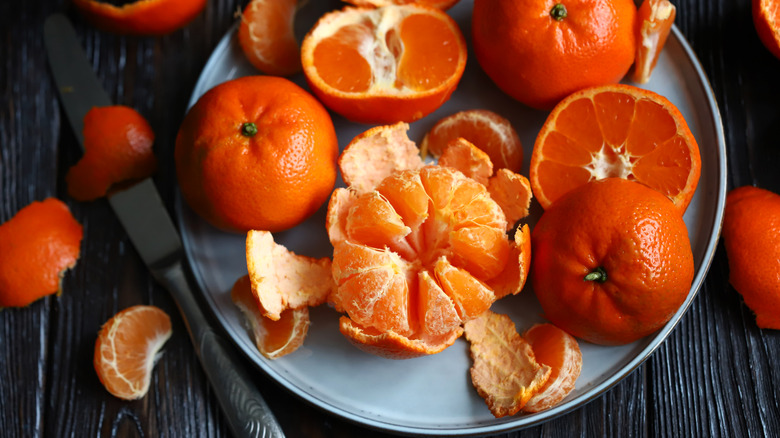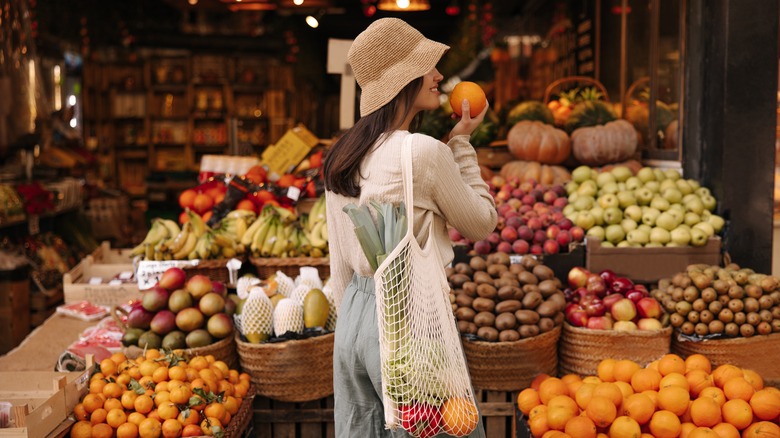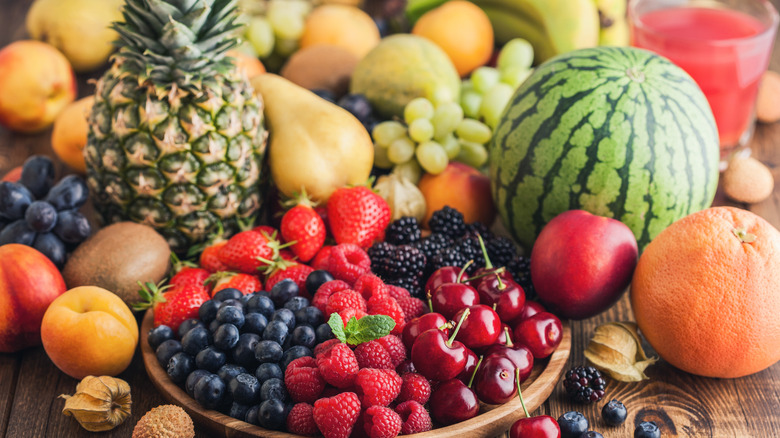The Best Time Of Year For Perfectly Ripe Tangerines
Although cherries, watermelon, and strawberries are a few fruits that peak during summer, you might be surprised to discover that tangerines do not. Although their golden-red sunset color and lush, pulpy flavor emulate the spirit of July, tangerines are actually in peak season during the fall and winter.
While tangerines do grow during the summer, it takes them months to ripen to perfection. Plus, they're typically grown in climates with mild winters like Florida, which means that even during cooler seasons, they're rarely exposed to sub-freezing temperatures. But just like humans layer up during the winter months to protect themselves from the cold, so do tangerines. The cold weather prompts the orange to thicken its peel and produce more sugar. And more sugar means more flavor. Because of the time it takes to ripen and the fruit's natural reaction to cooler weather, tangerines are best enjoyed from November to January.
Selecting the best in-season tangerines
Although tangerines taste best during the fall and winter, it's still important to know the signs of a high-quality tangerine any time of year. Luckily, there are easy ways to recognize red flags when buying fruit at the grocery store. Start by getting familiar with the USDA's tangerine grades.
The grades differ in quality based on appearance, color, and defects. "U.S. Fancy" tangerines are the top grade, boasting a bright orange color, round shape, and no visual defects. "U.S. No. 1" tangerines can have nuanced discoloration, but should still flaunt a bold attractiveness free from major bruising and dryness. "U.S. No. 1 Bronze" allows for color variation and slight bruising. "U.S. No. 2" tangerines may not be perfectly round, but should still only have slight color variation and skin blemishes. "U.S. Combination" is simply a mixture of the characteristics that define numbers one and two. "U.S. No. 2 Russet" permits russeting, which refers to brownish, rough patches on the skin caused by environmental factors. "U.S. No. 3" tangerines have the most visual defects but remain edible. No tangerine considered unsafe for consumption is approved for distribution.
If you have two Fancy-grade tangerines in your shopping cart, opt for the one with more liquid density by weighing them. Purchase tangerines that boast a firm, slightly moist, and blemish-free surface, and avoid those with ashy, dry skin. Tangerines with the stem and leaves intact are signs of high-quality fruit.
Fruits similar to tangerines to enjoy during summer
If you're bummed that tangerines aren't in season during the summer, don't fret! There are plenty of summertime fruits to enjoy that share a similar flavor profile to tangerines. Look for summer provisions with sweet, tangy, and citrusy notes.
The most on-the-nose substitute for tangerines are summertime oranges such as the luxurious Valencia cultivar, freshest from March to July. With a sweet and zippy flavor, these California-bred hybrids are perfect for snacking and even better for juicing. Another summertime orange is the one-of-a-kind navel, ripe from November to June. With a pointedly tart flavor and attention-grabbing aroma, these yummy little fruits are great in salads or as a substitute in a fresh tangerine mimosa.
Beyond summertime oranges, look to June peaches to curb your clementine cravings. Not only do peaches share that charming sunset color with tangerines, but they also share some of the key flavor characteristics. Although the prominent notes are delicate and floral, peaches are underscored by an unmistakably acidic tanginess. Plus, you don't have to peel them! Another excellent tangerine alternative is pineapples, which peak in July. Juicy like a tangerine and boldly sweet with a hair-raising tartness, pineapples can hold you over until tangerine season. Time flies when you're eating well, so enjoy the bountiful harvest of summertime fruits while you can, and tangerine season will come faster than you can say orange.


